Virgin Media Start UK Rollout of Remote Phy to Improve Network

Cable ISP Virgin Media has just made their first UK deployment of a new-ish technology – Remote Phy (R-PHY) – on their Hybrid Fibre Coax (HFC) based DOCSIS broadband and TV network in Coventry. The development will make their network more efficient, which should lead to better internet speeds and reliability.
In an R-PHY deployment the operator essentially moves their PHY (physical layer) circuit out of the Converged Cable Access Platform (CCAP), which is itself a central component of the Cable Modem Termination System (CMTS), and puts that same circuit at the end of their network. The change removes an analogue laser run and decreases the distance to the customer’s equipment (as well as other improvements), which results in better performance vs a more centralised system.
Generally, this change is likely to work best alongside the latest gigabit-speed capable DOCSIS 3.1 network standard (e.g. helps to maximise channel capacity without needing more spectrum), which Virgin Media are currently busy rolling out across their platform of over 15 million premises (due to complete by the end of 2021).
Advertisement
Statement from Liberty Global
Remote Phy technology is designed to improve the performance of our Access network – the network we use in the last mile between our technical facilities and customers’ homes – which will ultimately provide our customers with a more reliable service and better experience. It also delivers more capacity efficiency which will allow us to continually deliver wide-scale Gigabit speeds quickly and more cost effectively.
It is powered by CIN (Converged Interconnect Network) technology which digitises our Access network, and will replace our traditional analogue transmission in this space. This CIN will also support growing B2B services, mobile backhaul and 5G, and is a key enabler in our Fixed Mobile Convergence journey.
The technology is the foundation of our 10G network roadmap. 10G stands for 10 Gigabits per second – a fixed broadband platform that will deliver the next great leap in speed, capacity and latency for the networks that carry the vast majority of the world’s internet traffic
At present only a little over 200 live Virgin Media customers in Coventry will benefit from the “increased reliability and capacity” that R-PHY brings, but a seemingly larger deployment is expected to take place in Baguely (Manchester) by the end of 2020.
After that the operator plans to roll this out to around 1,000 locations across the United Kingdom during 2021, as well as in all of Liberty Global’s other European markets. “This milestone is a result of a multi-year development and integration effort across our Central Liberty Global and Virgin Media teams, with support from our suppliers,” said the operator.
Mark is a professional technology writer, IT consultant and computer engineer from Dorset (England), he also founded ISPreview in 1999 and enjoys analysing the latest telecoms and broadband developments. Find me on X (Twitter), Mastodon, Facebook, BlueSky, Threads.net and Linkedin.
« Broadband ISP Virgin Media UK Adds Sky Cinema to TV Go App
Backdoor Access Found in CDATA’s Chinese FTTH Broadband Kit »





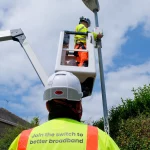



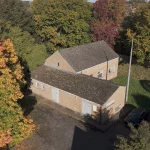
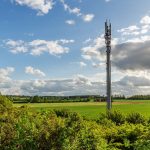

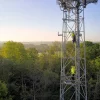
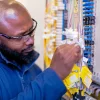

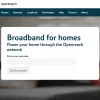





































I have a question about customers who live in areas affected by congestion like i have been for 7 months now. Do I have to wait for this upgrade to reach my area to get my issues fixed? Which is presumably sometime in 2021 for wn2 wigan. There are plenty of us around the country that have latency and packet loss issues on VM gaming support forum but all we get are estimated fix dates that come and go and nothing has been done.
In short, NO….
You won’t have to wait for this upgrade or even Gigabit upgrades but will have to wait until additional capacity can be added to your area.
Also in Manchester and have been struggling with poor latency since last December. This has also happened when I lived in Middlesbrough and Wimbledon; have spent more time chasing Virgin Media to get things sorted than actually using their internet
@A jalali – You ever thought of maybe changing provider, I mean something that follows you around 3 cities is likely not a problem (in the eyes of the provider) but most likely not the service your after….
And if your a gamer, you should never expect perfect latency from any cable operator, the way the infrastructure is built and works for cable broadband (Virgin Media) isn’t suitable for those requiring stable latency, DSL based services are better suited (BT, Sky… pretty much all others)
Is there an easy way to find out whether a particular area has been upgraded already to DOCSIS 3.1 ?
https://www.virginmedia.com/shop/broadband/gig1-gigabit-broadband#gig1
Who is the vendor that provides the RPHY solution?
A bit more for the curious – https://www.digitaltveurope.com/2018/11/07/liberty-globals-access-network-roadmap-revealed/
PS Took a while to actually get a node into a cabinet in the field, didn’t it?
I have a big problem with Virgin Media they clam it’s FTTP. a mix of Fibre and HFC DICSIS 3.1 isn’t FTTP
Where do they claim it’s FTTP?
Fibre to the Node and from the node copper coax cable look it up
That’s FTTC. Virgin do FTTP though.
Virgin Media use FTTN DOCSIS 3.1 a mix of Fibre Optical cable and Hybrid Fibre Coax HFC basically Copper cable. And Openreach use FTTC Fibre Optical cable and then telephone cable. HFC was first use in 1990.
Virgin don’t claim to have FTTP… Point me to a single advert making that claim.
I have fibre right to my property from Virgin (that’s called FTTP last time I checked) and they don’t even claim it’s FTTP as they keep their advertising generic and don’t differentiate between HFC and FTTP areas.
Most of Virgin isn’t FTTP, but they don’t claim it is. Not even the bit that is.
It will be DOCSIS 3.1 Data Over Cable Service Interface Specification a mix Fibre Optic Broadband to the Node and from the Node it will be coax cable to your house
While no doubt the poster TrueFibre thinks they are correct there are some nuances to their statements
Vast majority of Virgin Media is coax in the street run to the home, but a growing number are actually FTTP using RFOG, i.e. FTTP to outside wall and small converter on wall of property to create electrical DOCSIS signal for the tv and cable modems.
The Openreach statement is a bit too much of a blanket statement since while again the majority is partial fibre, there is some 2.75 million premises where FTTP is available.
I can assure you it’s fibre optic right to my property.
I have a box on my wall coverting the fibre back to coax to plug in to the Virgin Hub.
Read up on RFOG (Radio Frequency Over Glass) which is basically DOCSIS over fibre.
The vast majority of Virgins current project lightning rollout is FTTP using RFOG.
Fibre right to the property.
“The technology is the foundation of our 10G network roadmap.”
Is an interesting comment. That is quite some upgrade roadmap!
I look forward to the upstream side being upgraded to 3.1 anytime……
It probably isn’t such a big deal to go 3.1 on the upstream side as a lot of the cost is in router/modem upgrades and the hubs they are handing out now are perfectly well able to do 3.1 upstream…..
Still these are interesting noises and the ability to deliver 10G is increasingly on the horizon/deliverable by alt nets. Whilst I am usually accused of espousing too much bandwidth advocating 1G/1G I can honestly say I have no idea what a domestic user would do with 10G and I also have no idea what data source/destination would currently support 10G outside of a DC.
Going high-split can be difficult with legacy nodes, but RPHY is here to fix that…
Replacing the nodes only fixes subsplit if the architecture is node+0. Liberty is node+1 right up to node+10 and all actives have to be capable of the higher split, all passives capable of the higher over frequency, likely 1.2 GHz. A bunch of tap banks and in-home installations – splitters and isolators – are good for 860 MHz or 1 GHz only.
Yes, the amplifiers must also be upgraded to support high-split. The problem at the node is the return path. It is not easy to upgrade a legacy node to support that much upstream spectrum. RPHY fixes that issue.
True, that. Clip central trying to get 400 Mhz across an analogue return.
nah it will be 10Gbit down and 20Mbit up lol
Yes I do realise that Andrew Ferguson. I should of myself much clearer Yes they do use DOCSIS that will never change but newer connection it’s FTTP. In my street we still have Fibre to the Node using Coax cable HFC. I believe it’s called project lightning.
Project Lightning while lots of it is RFOG based, there are plenty of areas that were infill or expansion of old areas which saw coax rolled out.
So saying Project Lightning does not guarantee its the FTTP product.
On DOCSIS never changing, in the tech world never say never, one of the reasons for the shift to FTTP is the options it starts to give them for leaving DOCSIS behind if they wanted to.
What I mean never changing they also use DOCSIS even on there new FTTP service. The new standard will be DOCSIS 4.0 in the future.
There is a huge investment which has been made in the HFC plant over more than three decades and there is still a lot of untapped potential. It would therefoe be nonsensical to rip it all out in order to install fibre, so DOCSIS 3.1 has been produced to provide an evolutionary path to higher speeds. With further investment VM can get 10Gbps download which competes well with EPON although upload speeds are of course much worse in comparison.
“untapped potential”
A pun perhaps?
Sorry couldn’t resist that…….
I don’t think there will be a lot of milage in the backhaul HFC network post 3.1.
As both Carl and Henry are saying, further down the thread, D4 is Node+0 so you end up with fibre to every single node. At that point yes it is cheaper to leave the coax there, in the short term, but as you have FTTP to every cabinet you can then start to offer full FTTP on all new deployments or where coax need to be replaced – does happen.
But factor against that quite expensive active kit in the node to power the remaining few 100m of HFC versus the cost of a passive XGSGPON node and the cost of running new fibre to the home in the existing HFC ducts. Might not be as crazily different – particularly for MDU’s or estates with a single wayleave.
I would **guess** that some areas where things are easily upgradable will skip D4 and go straight to FTTP. And a few areas will be lumbered with 3.1 for a very long time.
As ever all down to the spreadsheet – where is the investment/long term asset case?
All speculation, which is fun,
Once you’ve gone fibre deep with short coax drops there is no need to go the expense of full fibre as you’ve now got the platform to deliver 10Gbps download. Note that this investment only needs to be done where necessary, it would be crazy to do nationwide upgrades for the tiny minority. For this minority, which could be a college, a business or even some individuals, a segment could be split off from the network to deliver 10Gbps. Doing it this way keeps leveraging the big investment in the HFC plant at minimal cost.
@Roger
Ummmmm Ok
The point we are all making is that when D4 does arrive you are no longer trying to ram digital over an analogue carrier system between n+o -> n+10 (or whatever). ALL the backhaul and distribution between nodes is fully digital.
Now wether you **can** upgrade the node link coax analogue -> digital is one thing but once you in some cases **have to** run fibre to the node then you at the crossroads situation I described.
And the answer to the crossroads question will lie in the Investment/return spreadsheet.
HFC will exist for a long time in the plant frozen to D3.1 – it will also, I suspect, coexist with FTTP.
Sometimes the sound commercial session is to ignore sunk costs and focus on the future as BT/OR are now doing…..
What I mean by never changing always use DOCSIS even on there new FTTP service. The new standard will be DOCSIS 4.0 in the future.
Sorry for the typo
Never know, they might switch things up in the future and roll out different standards where supported….
For a vast majority of the nation though Virgin will hang onto DOCSIS for a long time, but I feel they will start offering something for those areas where fibres run deep.
RFoG may or may not have a prolonged life. It is not easy for it to even support next-gen DOCSIS 3.1 in the upstream. 4.0 will make it even worse.
They certainly won’t always use DoCSIS on their FTTP. It would actually be cheaper and easier to move to XGSPON than to 4.0.
Keep an eye on ISPR.
Henry – newer kit has sorted OBI issues with OFDMA but still issues with a bunch of the existing for sure.
OBI is just one obstacle. There is also the capacity of the link. Then there is the very large dynamic range. The smallest transmit unit is just 400 kHz. The largest is… hundreds of MHz. All those issues go away when dropping the RF part.
It is also why the 4.0 standard assumes that the nodes are all digital, so there is no more RF and fiber to deal with. It is just easier that way.
Indeed. Thanks for the search below and the other information. Looks like I’ve not been keeping quite up to date with the latest and greatest. Will try and change that ASAP.
“ They certainly won’t always use DoCSIS on their FTTP. It would actually be cheaper and easier to move to XGSPON than to 4.0.”
Agree on that – this is where I see VM forking the network.
I would make an inspired guess that the forming would occur at 3.1 upstream and the FTTP portion drops RFoG. The HFC portion then mostly goes 3.1 upstream – but not everywhere.
VM have a lot of really good FTTP in the ground now and it would makes sense to capitalise on that. That means, for those of you lucky enough to be in Project Lightning territory, symmetrical 1G might be very real very soon.
Or VM could just use a different Lambda to light the fibres first both RFoG and FTTP which would seem a likely pathway. As it would just require an ONT on a different Lambda – off the shelf stuff. Both could happily coexist.
Spellchecker on my phone keeps mangling acronyms.
I agree JP and Henry things always change.
The FTTP vs HFC argument is just nonsense!! All Fibre systems are driven electronically, therefore by nature not completely optical.
Before spotting acronyms to make a argument sound plausible. Ask yourself what is the theatrical bandwidth of coax at 1 or 2 km? Docsis is just a transmission protocol that describes digital signalling over an analogue transport system.
With HFC it’s a hell of a lot in telephone wire. With that been full fibre is always number 1 with Virgin Media now rolling out FTTP it would Be even better. Know one is arguing Lol
The bandwidth of RG59 or RG6 coax at 1-2km?
Not great, due to attenuation.
Attenuation can be overcome by amplification, which in turn comes with loss of signal quality.
Lower signal quality means lower spectral density / modulation orders usable, so fewer bits per Hz.
In the labs and across very short runs Arris and others have gotten 3-4 GHz out of coax. With fibre you are talking THz of usable spectrum.
Coax has its place but will end up as the drop in node+0 networks where the coax runs are short enough to not require amplification after leaving the node.
All cable networks are evolving to this architecture at varying speeds. Some networks are already these fibre deep node+0 architectures.
Distributed gain amplifiers will be a part of many cable plants in the future. They will enable very high spectrum (3 GHz+) with longer reach.
Replacing all the actives and loads of passives may as well be accompanied by n+0 when it comes to it.
If existing coax can be used to backhaul those all the better.
I have not seen anything about use of frequencies that high in cascades, only n+0. Information welcome.
Cisco wrote a paper on it: Blueprint for 3 GHz, 25 Gbps DOCSIS
Will check it out: thank you!
@ Henry
Thanks for the link – very informative and unusually comprehensible.
And what is Openreach doing to improve its services over copper lines that many will have for the extremely long forseeable future? 80/20 fttc is not future proof, its even struggles today in some households with multiple tv’s and computers!
Openreach expects its FTTP network reach 20 million UK premises by around 2029. However further investment in the more rural areas will be more costly, so we’ll have to see what happens.
tl;dr – ye cannae change the laws of physics
The copper that BT have for the final mile is twisted pair, Virgin media is coaxial cable.
Twisted pair copper is nothing like coax transmission lines.
If the twist is consistent, it can get closer to transmission line properties (but still, but the sort of twisted pair used in POTS line is a million miles away from that. Hence the very short range for G.Fast. Also demonstrated by the susceptibility of xDSL to external RF – not an issue with coax.
So, for BT’s copper external plant – replacement with fibre is the only option
Just as an aside my thanks to Henry for his comments on this news article. It’s been very informative and I’ve learned things – if all comments could be as constructive, I’m as guilty as anyone of making ones that aren’t, happy days.
It’s good to hear from someone who clearly knows their stuff in the field. As an enthusiastic amateur it’s a privilege to be educated by those more in the know.
Cheers Henry!